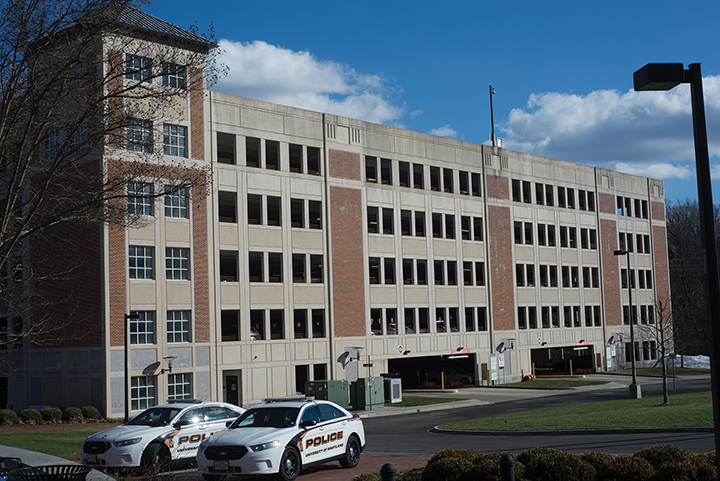By the end of 2016, the University of Maryland is set to install new solar panels on the Regents Drive, Mowatt Lane and Terrapin Trail parking garages.
The university is in the final design stage of the process, which will be completed by the summer, said Mary-Ann Ibeziako, director of Facilities Management’s engineering and energy department. Construction will begin at the conclusion of the design stage, and installation will take about two months per solar panel, Ibeziako said.
“The solar panels showcase our commit to the environment and allow us to integrate sustainability into the academic experience,” Ibeziako said. “It provides us a form with which students and faculty can have hands-on access to renewable systems and do research and studies to improve on them.”
The planning for the solar panels began years ago with the university’s 2009 Climate Action Plan, which included a goal to implement a 2-megawatt renewable energy solar power source on the campus.
In fall 2014, the university started the planning stage of implementing the solar panels and crunched the numbers to find out how much it would cost. Altogether, they found, it would cost the university $10 million to implement, said Robert Hermstein, Facilities Management assistant director for engineering services.
The Maryland Energy Administration offered a $250,000 grant, and the university provided $400,000, Ibeziako said, but it would not pay the entire costs of the panels to be designed and installed on the campus.
A power purchase agreement, in which a provider will pay for the entire cost of the project, proved the solution. Next week, the university will sign a contract with Washington Gas to buy power for the solar panels for the next 20 years in return for Washington Gas funding the project, Hermstein said.
Based on 2014’s average electricity rate, the solar panels will save the university about $1 million during the 20-year contract period, both Ibeziako and Hermstein said.
The university created a base design for the solar panels in fall 2015, but the Architecture Review Board, which oversees designs, requested a few design changes for the solar panels, Ibeziako said. The initial design hid panels from sight, but the board hopes the modified design will celebrate the panels and highlight the university’s sustainability.
“As part of our effort we got 10 [megawatts] of renewable solar power approved by the USM Board of Regents for all the USM institutions,” Hermstein wrote in an email. “Bowie State, [University of Maryland Eastern Shore], Salisbury and Frostburg State are all looking to install solar panels on their campus as part of that effort.”
Additionally, the university is in talks with Pepco, the company the university imports power from, Hermstein said.
“Because of the solar canopies we are putting in, we have to renegotiate our entire contract with Pepco,” he said. “It might be a couple of months before it will be finalized.”
The university’s Energy Research Center and the Department of Transportation Services both support the solar panel project, Ibeziako said. The research center is developing different educational programs based on the solar panels in hopes of tying them to specific classes each semester, Ibeziako said.
Joseph Ivanov, a senior materials science and engineering major, backed the project, suggesting that the university’s lead could inspire other groups in the area to invest in solar energy.
“The solar potential for this area is pretty average, so the energy we can gain will be only average, and a large number of panels would be needed to account for any significant fraction of the university’s energy usage,” Ivanov said. “Installing high-profile solar-powered features in the university could set an example for the communities around the campus.”



